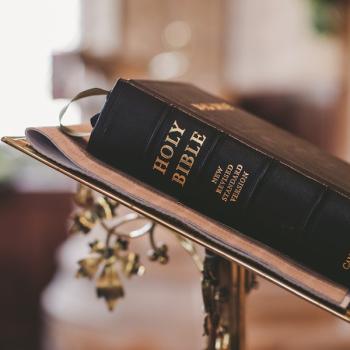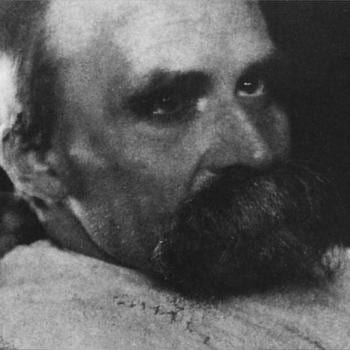Obviously this is a rough sketch of how a reunited church might look – there are dozens of questions raised by this sketch, and it is up to the churches themselves to discern the best ways forward. There are also many barriers to shared communion that I will not attempt to address, but a central question is the authority of the Roman Pope. Equipped with the foregoing account, I think it is possible, for those like me who are less educated on these matters, to reconsider papal authority as it relates to canonical territory.
The integrity of canonical territory has been a prominent concern among our Orthodox brothers and sisters – maybe one of the most prominent concerns in their dialogues with Rome. And it is understandable why this is so. At present the Pope has the power to intervene in the affairs of the Eastern Catholic Churches, to reconfigure their canonical territories at will, and to erect parallel Latin jurisdictions within the canonical territories of the Eastern Churches without deference to their territorial rights. Although Eastern Catholics may understand the powers of the Roman Pope differently, this account on the part of Rome does not display the understanding of autocephaly upheld by the Orthodox.
Therefore, I think it is fitting for Rome to consider giving up each of these powers, so that each primate has full authority over the canonical territory of his church. Then it is easier to say what powers should rest with the Roman Pope. These might include, for example, the right to hear and resolve territorial and other disputes among the primates of the autocephalous churches, the right to convoke councils, and the right to raise questions concerning doctrine and discipline for consideration by the primates in order to preserve unity among the churches. These might also include special roles in recognizing autocephaly and in guiding ecumenical dialogue.
This is simply an outline of how the restoration of communion with our Eastern Orthodox, Oriental Orthodox, and Assyrian brothers and sisters might look, but I will note a few more concerns that arise from what has been said so far. First, I have not addressed how these changes might be made – that is a question for theologians and canon lawyers to consider. Second, while this vision contributes to subsidiarity among the canonical churches, it does not address subsidiarity within the Latin Church – that is a conversation that should involve our Protestant brothers and sisters. Third, it is clear that a procedure must be developed for hearing and resolving disputes among the primates when Rome is party to the dispute.
Finally, this sketch calls for bi-ritual churches or even tri- or tetra-ritual churches. The Latin Church includes multiple rites, but several of these have been suppressed in favor of the Roman Rite in the past. Perhaps the Eastern Churches can discover ways of marrying their various liturgical and canonical traditions in a similar and more successful manner, where it makes sense to do so. Whether this involves overlapping jurisdictions or adherence to the rule of ‘one city, one bishop’ falls to each church to decide with respect to its own canonical territory.
Relatedly, there will also be need of a procedure for establishing extra-territorial ordinariates or hierarchies, where these are welcomed by the local primate. Consider, for example, the possibility that a large number of Assyrians migrate to the Patriarchate of Alexandria. Perhaps the Catholicos-Patriarch of Babylon will ask the Coptic Pope to establish an ordinariate for the faithful of the East Syrian Rite or for permission to establish an East Syrian hierarchy within his territory – the two primates can negotiate the details concerning the appointment of bishops, etc., so that the primary territorial rights of Alexandria are respected. Alternatively, the Coptic Pope may approach the Catholicos-Patriarch and request guidance in setting up an ordinariate for the faithful of the East Syrian Rite or that the Catholicos-Patriarch consider erecting an extra-territorial hierarchy for the same reason – again, the two primates can negotiate the details. I assume that procedures like this exist already, but Rome may have a special role in keeping track of and ensuring clarity in agreements like these.
This last consideration allows me to address three churches I’ve left out of the foregoing. First, if communion among the churches is restored, I assume the Italo-Albanian Catholic Church would merge with the hierarchy of Orthodox bishops in Italy and Sicily – what would result is unclear to me – an autonomous church answering to Constantinople? to Rome? an autocephalous church that lacks primary territorial rights? Second, the same question arises with regard to the Ruthenian Catholic Church and the other Byzantine hierarchies in the United States – what results from merging with the Assembly of Canonical Orthodox Bishops? Third, I did not address above the territorial claims of the OCA, because its autocephaly is not universally recognized – otherwise its territorial claims are comparable to those of the Orthodox Church of Poland. Finally, similar questions arise with regard to the seven other regions where the Eastern Orthodox Churches have asked the bishops of overlapping jurisdictions to work out plans for unity among Byzantine Christians, as well as with regard to the ROCOR and the extra-territorial jurisdictions of the Oriental Orthodox and Assyrian Churches.
Ben Martin
Chicago, IL,
Feast of the Conversion of St. Paul 2017













